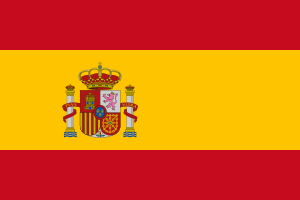Spanish facts for kids
The word Spanish refers to things connected to Spain, a country in Europe. It can mean a person from Spain, the unique culture and food of Spain, or the Spanish language spoken by millions around the world. It also relates to the Spanish Empire, a powerful historical period when Spain had a big influence across the globe.
Contents
What Does 'Spanish' Mean?
The term 'Spanish' helps us talk about many different things that come from or are related to Spain. It's like saying 'American' for things from the United States or 'French' for things from France.
Spain: The Country
Spain is a country located in southwestern Europe. It shares the Iberian Peninsula with Portugal. To its north, it borders France and Andorra, and to the south, it's very close to Africa. The capital city of Spain is Madrid, a large and busy city right in the center of the country.
Spain has a very diverse landscape. You can find high mountains like the Pyrenees, beautiful coastlines along the Mediterranean Sea and the Atlantic Ocean, and even dry, desert-like areas. This variety means Spain has many different climates and types of nature.
Spanish culture is famous for its lively traditions. Think of delicious food like paella and tapas, passionate music like flamenco, and exciting festivals. Family and friends are very important in Spanish culture, and people often enjoy spending time together, especially during meals.
The Spanish Language
The Spanish language is one of the most spoken languages in the world. It's the official language of Spain and many countries in Latin America, including Mexico, Colombia, Argentina, and Peru. It's also widely spoken in parts of the United States.
Learning Spanish can be a lot of fun! It's a Romance language, which means it developed from Latin, just like French, Italian, and Portuguese. Spanish is known for its clear pronunciation and often has a musical sound. Knowing Spanish can help you connect with people from many different cultures and understand their traditions better.
Spanish People and Culture
Spanish people are known for their warmth and friendliness. They have a rich heritage that blends influences from many different groups throughout history, including Romans, Visigoths, and Moors. This mix has created a unique culture with strong traditions in art, music, and dance.
Art is a big part of Spanish culture. Famous artists like Pablo Picasso and Salvador Dalí came from Spain. Music and dance, especially flamenco, are also very important. Flamenco is a powerful art form that combines singing, guitar playing, and passionate dancing.
Food is another central part of Spanish life. Meals are often social events, and people take their time to enjoy them. Besides paella and tapas, other popular dishes include tortilla española (a type of potato omelet) and churros (fried dough pastries often eaten with chocolate).
The Spanish Empire
The Spanish Empire was one of the largest empires in history. It began in the late 15th century after Christopher Columbus's voyages to the Americas. Over the next few centuries, Spain gained control over vast territories in North and South America, the Caribbean, parts of Africa, and even the Philippines in Asia.
This period was very important for global history. The Spanish Empire spread the Spanish language, culture, and religion to many parts of the world. It also led to a lot of trade and the exchange of goods, plants, and animals between Europe, the Americas, and Asia. While the empire eventually declined, its legacy can still be seen today in the language and culture of many countries around the globe.
See also
 In Spanish: Spanish para niños
In Spanish: Spanish para niños


